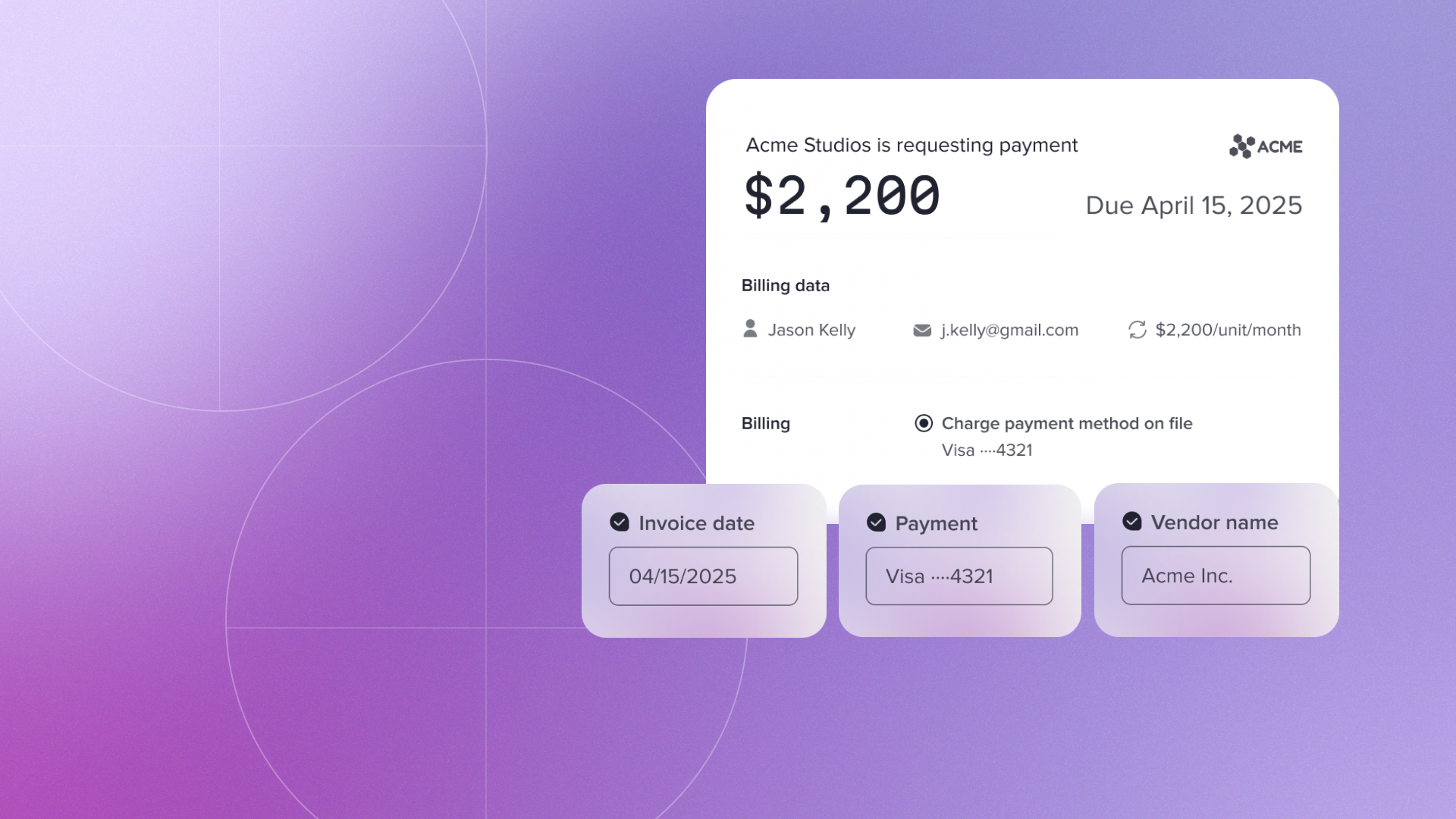
Fragmented financial systems are a common challenge for most SMBs
On average small and midsize businesses (SMBs) use 172 software applications across departments.
Most of these tech stacks are a maze of disjointed systems, with a sizeable chunk dedicated to financial tasks and software — FP&A, business intelligence (BI), payroll, treasury management, cash flow management, ERP, CRM, accounting, banking, payment processing, and more.
Managing so many tools operating in silos is a significant burden for most SMBs.
To discuss how fintechs can solve this problem, we talked to Karolina Jarosińska, a product marketing manager, and Christian Joseph Agius, the Co-Founder of Fyorin, a unified financial platform that helps SMBs streamline their financial operations. They identified several challenges facing SMBs and how fintechs can overcome them with an all-in-one solution.
3 trends driving the need for integrated, streamlined finance solutions
Disconnected finance tools tend to cause SMBs to resort to manual processes because financial data is inaccessible across systems. Outdated, error-prone data that is dispersed across multiple spreadsheets can have a serious financial impact on a growing SMB.
For example, without accurate, real-time data, an SMB might overpay on invoices, miss out on early payment discounts, or fail to detect cash flow issues until it's too late — all because the relevant information is spread across multiple databases, spreadsheets, and documents.
During our discussion, Christian identified three major trends that have steered SMBs toward integrated solutions that serve as a central hub for their finance needs.
Trend #1: Finance teams using multiple, disconnected apps
Finance teams use a number of tools — such as accounting platforms (QuickBooks, Xero, Netsuite, SAP, etc.), expense management software, receipt scanners, and procurement solutions — in their day-to-day operations. Each of these tools is deeply embedded in the company’s operations, making the team reluctant to part with them. What’s more, as organizational needs grow, so does the tech stack. Once financial data is spread across a dozen or more platforms, keeping it current becomes an insurmountable task. Finance teams spend significant time consolidating and reconciling data across platforms, which leads to inefficiencies and delayed decision-making.
Integration seems like an obvious choice for solving the issue of disjointed systems. Whether through an integration platform or through APIs, integrations can help fintechs create a financial ecosystem where all systems talk to each other.
But even under the best circumstances, the cost of building and maintaining integrations adds up over time. That’s why finance teams use integration tools, custom integrations, and sometimes a combination of both.
Trend #2: Distrust in traditional banking
Consumers are ditching traditional banks for online banks and alternative fintech solutions. More than two-thirds of them cited high fees and a lack of trust as their reasons. This trend has bled over into B2B as well. According to Karolina, a growing distrust in traditional banks comes from two core factors:
- Rising interest rates: Higher interest rates have led to a liquidity squeeze. Banks are relying on brokered deposits and advances from the Federal Home Loan Bank (FHLB) system to maintain liquidity, which is not a sustainable long-term strategy.
- Legacy banking systems: Banks also tend to stick to outdated systems and rigid processes, which makes them unappealing to finance teams that want to move quickly and efficiently.
In contrast, fintechs offer finance teams an alternative to traditional banking while still allowing them to work with traditional banks by creating a tech stack that integrates easily with banking and the rest of their toolkit.
Trend #3: Cross-border, global expansion
Another factor influencing the trend toward integrated solutions is that businesses can’t afford to stop expanding. With that growth comes a variety of challenges: managing multiple currencies (with new tax and regulatory frameworks), handling international payments and transfers, and adding new tools to their tech stack.
With each new region, SMBs increase their chances of errors and operational inefficiencies. For example, the finance team has to calculate and remit taxes in each new country they expand to. If their systems are not fully integrated, there’s an increased chance of overpayments, underpayments, and even penalties for non-compliance.
All of these challenges lead to the need for a centralized financial solution that lets them scale quickly, automate routine tasks, and manage operations from one platform.
Conventional integration methods aren’t ideal for financial ecosystems
According to Karolina, integrating financial systems with other apps is the only way to maintain clear visibility into cash flow and ensure seamless operations. An integrated tech stack simplifies workflows, reduces errors, and supports better decision-making.
However, building these integrations can be challenging with traditional integration methods, such as integration platforms as a service (iPaaS) or point-to-point (P2P) integrations.
Integrating with iPaaS
With iPaaS, you can build as many integrations as you like and scale up and down as needed. But, it does have a few downsides:
- Cost: iPaaS solutions can be expensive, especially for large-scale integrations or when dealing with many applications.
- Complexity: While iPaaS simplifies some aspects of integration, managing and monitoring multiple integrations across different platforms can be challenging.
- Limited customization: iPaaS solutions might not fully accommodate unique business needs, requiring custom development or workarounds.
Point-to-point or custom integrations
With point-to-point integrations, you have more control over the way different applications talk to each other, but you need a big engineering team to manage the integration architecture, which creates several downsides:
- Scalability issues: As the number of applications grows, managing and maintaining multiple direct connections becomes increasingly time-consuming.
- Maintenance burden: Each integration requires custom coding and ongoing maintenance, which can be resource-intensive and prone to errors.
- Lack of flexibility: Point-to-point integrations are typically rigid, making it difficult to adapt to changing business needs or to integrate new systems.
While iPaaS and P2P integrations are both suitable methods for integrating multiple systems, they introduce operational challenges for SMBs trying to integrate financial tools. The result? High operational costs, redundant processes, and a lack of real-time visibility into cash flow.
Why unified APIs are the solution for creating all-in-one platforms
A unified API simplifies builds by aggregating multiple third-party services into a single, consistent API that abstracts and standardizes the differences between the APIs of various platforms. This leads to:
- Reduced development time: A single consistent interface minimizes the time and effort needed to build multiple integrations for various sources.
- Scalability: Adding new services doesn’t require significant changes to the integration code, allowing SMBs to scale faster.
- Lower maintenance costs: The unified API provider bears the burden of managing multiple APIs, while third-party integrations benefit from your existing version control, testing, and deployment systems.
How Rutter’s unified API supports Fyorin’s success
As a comprehensive solution for global operations, Fyorin needs to support hundreds of platforms. Rutter simplifies builds with a unified API that streamlines the integration of commerce platforms, marketplaces, accounting systems, and payment processors.
- Streamlining API builds: Rutter’s technology underpins Fyorin’s ability to deeply integrate with various systems, ensuring that complex financial data is easily accessible and manageable across platforms.
- Seamless implementation: By leveraging Rutter’s API, Fyorin simplifies the integration process, minimizing disruption and reducing the fear of change for finance teams. This ease of implementation allows businesses to adopt Fyorin’s unified platform without the typical challenges associated with new system rollouts.
Rutter’s common data model allows product teams, such as the one at Fyorin, to easily build and maintain integrations across multiple platforms.
Book a demo today to learn more.





